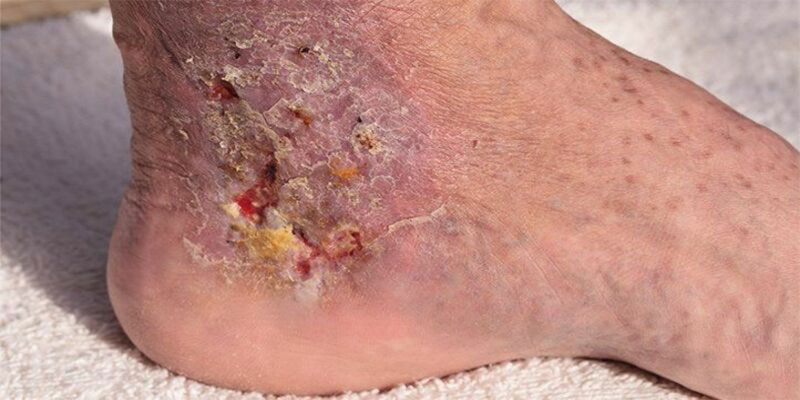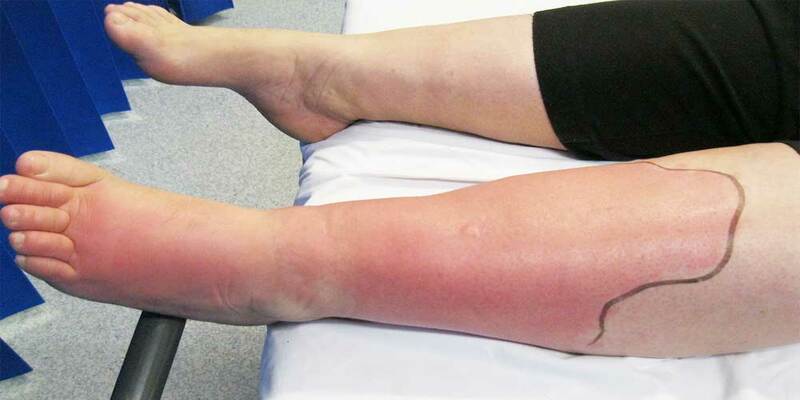What Is Cellulitis? Cellulitis is a potentially fatal bacterial infection that affects the dermis, the second layer of skin, and the subcutaneous tissue, which comprises fat and connective tissue. The epidermis is the most superficial layer of skin. Adults are frequently affected by cellulitis on the lower legs. Cellulitis may affect any body part, although it is most common on the lower legs. The American Academy of Dermatology reports that cellulitis often affects the face and neck of children (AAD). Each year, around 14.5 million Americans suffer from cellulitis. According to a board-certified dermatologist and founder of SkinSafe Dermatology and Skin Care in Los Angeles, Tsippora Shainhouse, MD, "cellulitis" refers to skin inflammation.
What Does Cellulitis Mean?
Cellulitis is a common illness that may affect the skin and the subcutaneous tissue underneath it. It occurs when harmful organisms enter and spread via a crack in the skin. Infection is the following state, which may result in inflammation, redness, discomfort, or heat. Inadequate blood flow to the arms and legs, inadequate drainage of the veins or lymphatic system, and varicose veins, which are twisted and bulging veins at the skin surface, are all circulatory disorders. Sores may be caused by skin conditions such as eczema and psoriasis and contagious infections such as chickenpox. Liver diseases such as chronic hepatitis and cirrhosis are also potential causes.
How Exactly Is Cellulitis Diagnosed?

There is no medical test that can diagnose cellulitis. Examining the damaged skin and asking appropriate questions allows for diagnosing the illness.
Carefully notify your physician about the following:
- An open wound on your skin.
- Your whole medical conditions
- Every medication you take
- This information may help you get the proper treatment and prevent issues.
- Certain persons must have the following to have an accurate diagnosis:
- Medical exams A test cannot diagnose cellulitis but may identify the bacteria responsible for a disease.
- You may be referred to a dermatologist if you are presently seeing a physician who is not a dermatologist. Cellulitis may mimic other skin conditions and illnesses.
- Dermatologists have extensive knowledge in identifying the many conditions that may resemble cellulitis. For the treatment of your skin illness, a precise diagnosis is required.
What Is The Best Treatment For Cellulitis?
If you have been diagnosed with cellulitis, you must get treatment immediately. It may prevent cellulitis from worsening. It may avoid life-threatening medical complications such as blood poisoning and excruciating agony.
To treat cellulitis, physicians prescribe:
Antibiotics
Cellulitis may be effectively treated with an antibiotic administered orally (swallowed). The necessary antibiotic and treatment length will vary. Most people take antibiotics for between seven and fourteen days. It may be necessary to take the antibiotic for a more extended amount of time if your immune system is impaired. If you discontinue the antibiotic too soon, it may not eradicate all the pathogens that caused your sickness—taking the medication exactly as prescribed helps treat cellulitis. Some people need to take several antibiotics. Sometimes, antibiotics are delivered intravenously. When necessary, hospitalization is often advised. This may assist in the recovery of severe or facial cellulitis. The typical hospitalization lasts somewhat more than one week.
Wound Treatment

Treating the patient's wounds is an essential component of cellulitis treatment. A cut or wound will heal more quickly if it is covered while it is treated. You will be instructed in the proper application of specific wound dressings and the frequency with which you should replace them.
Rest
It may prevent cellulitis from becoming severe and aid the body's recovery. If you have cellulitis in your leg, elevating your leg may assist in reducing swelling and accelerating your recovery. If the germs enter the body via another skin disease, such as an athlete's foot, that condition must also be treated.
Conclusion
If your physician merely examines your skin, they should be able to identify cellulitis without more testing. It may be necessary to undergo blood tests and other diagnostic procedures to exclude the chance of having another ailment. Cellulitis is often treated with an antibiotic that is taken orally. If the illness seems to improve after you've started taking an antibiotic, you should report your findings to your doctor within three days. You need to finish the whole course of the antibiotic, which may last anywhere from 5 to 10 days, even if you start to feel better.




